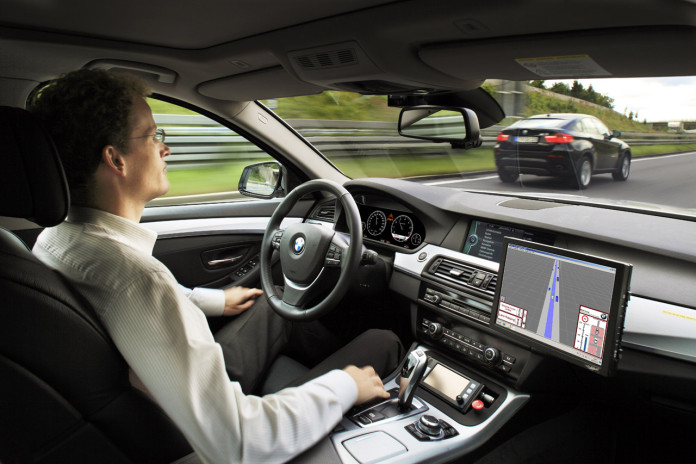![]() By: Megan Nichols
By: Megan Nichols
In 1993, “Jurassic Park” featured a fleet of camouflaged jeeps that have left a permanent mark on the sci-fi community. It wasn’t just their eye-catching – and often imitated – color scheme that made them special, each vehicle packed computer technology that allowed it to follow a predetermined course and present high-fidelity media to passengers.
Fast-forward to 2004 and Will Smith is sporting a futuristic Audi that joins other cars capable of autopilot on the highways of 2035 Chicago. Both of these examples from science fiction predict the transition we are watching take place. As technology becomes a more prominent component of how our cars function, the paradigm of the car itself is, in fact, evolving into something much different than it was not long ago.
Playing Catch-up With Home and Office
When you consider just how far in-car technology has come, even since 2010, it’s quite impressive. As Car and Driver accurately pointed out in a feature article published that year, many new cars were still reliant on late-‘90s technology like satellite radio, even though superior technologies were already widely available.
It took the launch of the Tesla Model S to make manufacturers realize that consumers who enjoy the convenience of a smartphone and modern computer are entirely within reason to ask for the same level of performance from a modern automobile.
Today, you can expect that most new cars – even econoboxes – can at the very least be optioned to support technologies like Bluetooth and GPS navigation. It’s the next generation of vehicles. However, that will truly impress with expanded functionality.
![]()
 In-Car Tech in the Era of Autonomous Cars
In-Car Tech in the Era of Autonomous Cars
Unless you’ve been living under a rock for the past couple years, you’ve probably heard about efforts from Google, BMW, Audi and other manufacturers to produce a car capable of piloting itself.
What’s important to keep in mind is autonomous driving is only one of an array of new technologies poised to hit cars in the next five years. Other, less vaunted new perks are already arriving on 2017 models.
Apple’s CarPlay technology and the rival offering from Google, Android Auto, offer access to online resources at the whim of a voice command and make syncing your car with your mobile device easier than ever. Just about every major manufacturer has fallen in line with one of these offerings and will sell you a 2017 model with it in place.
Interconnected Automobiles
The infrastructure required to realize fully automated cars is being designed and constructed today, but just because a car can drive itself doesn’t mean automated cars will be allowed on highways. There are still significant legal questions to be answered before we arrive at that reality.
What this means, though, is that new cars will soon have the ability to take in information about what’s going on all around them. Infinity is already looking into an automated pedestrian-avoidance system that could stop you from colliding with a pedestrian on a dark street. Today, cars are built to meet industry standards for safety both inside and out. We don’t expect that to change, but how they achieve those standards is where the technology will come in. Making sure the technology included in the vehicle doesn’t interfere with rider safety is a must.
Once the infrastructure is in place, our collective automotive fleet will have the ability to communicate. This is where the potential for real progress toward automation arrives, because once cars can compare data, they will be able to automatically, harmoniously make decisions while driving in traffic.
The Future Isn’t Now, but It’s Soon
When should we expect to see completely self-reliant cars on highways? Tesla frontman and smart-car pioneer Elon Musk said in 2014 that we should expect to have autonomous cars on the road in five to six years. That prediction would call for the technology to be fully in place by 2020.
It’s a stretch, but even so, this is a revolution that is well within most of our lifetimes and will have huge repercussions on how we go about our lives. Is the paradigm of the automobile changing? Yes, it is, and our lives are changing with it.
About the Author:
 Megan Nichols is the editor of Schooled by Science. She enjoys writing about the latest innovations in technology and science.
Megan Nichols is the editor of Schooled by Science. She enjoys writing about the latest innovations in technology and science.










